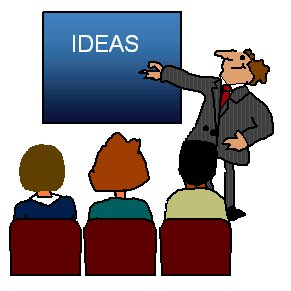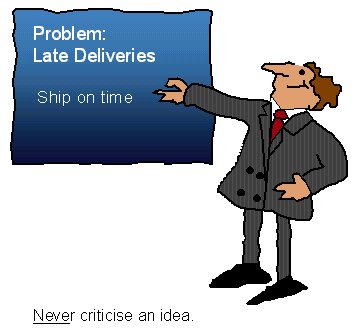
Purpose
Before a team can make a decision, they should make sure they have available
the largest volume of ideas and options possible. The process of brainstorming
establishes a method for a team to creatively generate a high volume of ideas
on any topic.
How does it work ?
- Encourages open thinking when a team is stuck in 'same old way' thinking.
- Gets all team members involved and enthusiastic so that a few people don't
dominate the group.
- Allows people to "hitchhike" - build upon ideas generated by others in the
group.
Method
- The brainstorming topic or question is agreed on, and written down for
everyone to see.
( Make sure everyone understands the problem statement. If necessary
ask one or two members to paraphrase it before recording it on a flip-chart.)
- Each team member, in turn, gives an idea. No ideas are criticised. Not Ever !
- As ideas are given, write them down, in large print, on a flip chart.
( Ensure every idea is recorded as it is given. Use the same words as the
speaker. Don't interpret.)
- Ideas are given in turn. If a person does not have an idea on that round,
they pass. The process stops when all of the people involved pass their
turn.
( Keep the process moving and relatively short - 10 to 20 minutes works
well, depending on the complexity of the problem.)
- Review the list of ideas for clarity and agree on and discard any duplicates.
( Discard only the ideas which are virtually identical. It can be important to
preserve subtle differences that are revealed in slightly different words.)

Points
- Be particularly alert for ways to combine suggestions.
- The procedure can be modified to fit the group or subject. It is possible to
give the group time to write down their ideas, then go around the group
with each person saying one of their ideas until the lists are completed.
|

